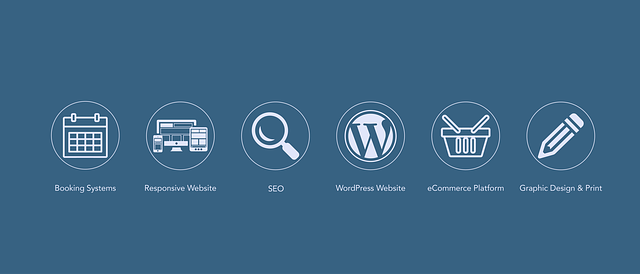Internal linking in WordPress leverages semantic anchor text to boost SEO and user experience. By strategically creating links between relevant pages, you guide search engines through your content, improving indexing. Semantic anchor text, using descriptive keywords that accurately reflect linked content, avoids keyword stuffing and enhances context for both users and algorithms. Identify complementary topics, use natural language, optimize for relevance, and diversify link patterns to avoid penalties. Regularly review and update these strategies based on analytics data and SEO trends for optimal performance, better rankings, and increased user satisfaction.
In the digital landscape, internal linking is a powerful tool for boosting SEO performance. This comprehensive guide unravels the intricacies of effective internal linking strategies, optimized for long-form content creation. From understanding its profound impact on search engine rankings to crafting compelling semantic anchor text and implementing best practices in WordPress, we provide step-by-step insights. Learn advanced techniques to enhance your site’s navigation, improve user experience, and elevate your SEO strategy using semantic anchor text for WordPress.
- Understanding Internal Linking and its Impact on SEO
- Identifying Relevant Content for Internal Links
- Crafting Semantic Anchor Text: A Step-by-Step Guide
- Implementing Internal Links: Best Practices for WordPress
- Measuring and Optimizing Internal Link Performance
- Advanced Strategies for Effective Internal Linking in WordPress
Understanding Internal Linking and its Impact on SEO

Internal linking is a powerful SEO strategy that can significantly boost your website’s visibility and performance in search engine results. It involves creating a network of hyperlinks within your WordPress site, connecting relevant pages to one another. This strategic placement of links not only enhances user experience but also sends strong signals to search engines about the content’s relevance and importance. When you optimize internal linking, you’re essentially guiding search algorithms as they crawl through your site, understanding the relationships between different pages and their topics.
Semantic anchor text plays a crucial role here, referring to the words or phrases used in hyperlinks that describe the target page’s content. Using semantic anchor text tips like incorporating relevant keywords naturally and creating diverse anchor texts can optimize your internal linking strategy. This semantic anchor text strategy ensures that both users and search engines grasp the context of each link, leading to better comprehension of your site’s structure and content hierarchy. As a result, search engines can efficiently index your pages, improving overall SEO performance.
Identifying Relevant Content for Internal Links

Identifying relevant content for internal links is a crucial step in any WordPress optimization strategy. Start by analyzing your website’s existing content and identifying topics that are closely related or complementary to one another. This could involve looking at similar blog posts, product pages, or resource guides that attract a significant number of visitors. For instance, if you have an article about “SEO best practices,” consider linking to other SEO-related content on your site, such as a guide on “keyword research” or “on-page optimization.” The key is to create a natural flow of information where one piece of content seamlessly leads to another, enhancing user experience and reducing bounce rates.
When selecting content for internal links, focus on using semantic anchor text tips that accurately describe the target page’s content. Avoid generic phrases like “click here” or “more info.” Instead, incorporate keywords that reflect the topic and context, ensuring they align with your overall SEO strategy. A semantic anchor text tutorial can guide you in choosing the right words to capture a user’s attention while also informing search engines about the linked content. By using relevant and descriptive anchor text, you not only improve the navigation experience for your visitors but also signal to search engine algorithms that your internal links are valuable and contextually appropriate.
Crafting Semantic Anchor Text: A Step-by-Step Guide

Creating effective semantic anchor text is a key component of any successful internal linking strategy, especially for WordPress sites aiming to enhance SEO. Semantic anchor text goes beyond simple keyword stuffing by accurately reflecting the content it links to, thereby providing a clear context for search engines.
Here’s a step-by-step guide:
1. Identify Keywords: Start by identifying relevant keywords and phrases within your content that you wish to use as anchor text. These should be terms that naturally describe the target article or page. For instance, if linking to a post about “the benefits of organic farming,” some semantic anchor text options could be “learn more about sustainable agriculture” or “explore the advantages of organic produce.”
2. Keep it Natural: Craft your anchor text in a way that feels natural and flows with your writing. Avoid overly generic phrases like “[link] here” or “click this.” Instead, aim for something contextual and meaningful, such as “as discussed in our previous post on eco-friendly practices,” or “for an in-depth look at these trends, see our latest analysis.”
3. Optimize for Relevance: Ensure the semantic anchor text provides a clear indication of what readers will find when they click. For example, if linking to a detailed guide on WordPress optimization, relevant anchor text could be “discover advanced WordPress SEO techniques” or “master WordPress performance tuning.” This helps users understand the value of clicking and reduces bounce rates.
4. Diversify Your Links: Vary your semantic anchor text to keep your internal linking profile diverse and interesting for both readers and search engines. Use a mix of short, medium, and long-tail keywords, as well as descriptive phrases, to avoid any pattern that might raise red flags with search algorithm updates.
Implementing Internal Links: Best Practices for WordPress

Implementing internal links is a strategic move for any WordPress site aiming to enhance user experience and improve its search engine optimization (SEO). Best practices involve using semantic anchor text, which provides context to both users and search engines, making your content more digestible and relevant. A semantic anchor text for WordPress should accurately reflect the target page’s content, naturally integrating within the surrounding text. This approach differs from keyword-stuffing practices, ensuring a cleaner user experience and avoiding penalties from search engines.
When setting up internal links in WordPress, focus on creating a logical structure that guides users through your site seamlessly. Linking to relevant pages within your content not only helps visitors find what they’re looking for but also encourages them to explore more of your site. A well-planned semantic anchor text strategy can significantly impact your SEO efforts, making it an essential component of your WordPress optimization tutorial.
Measuring and Optimizing Internal Link Performance

Measuring internal link performance is a crucial step in optimizing your website’s architecture for better user experience and search engine visibility. Using WordPress analytics tools, you can track click-through rates (CTR) and time spent on pages to understand which links are driving engagement. Identify high-performing pages with low bounce rates as these are ideal candidates for internal linking. By analyzing user behavior, you can strategically place links using semantic anchor text tips that align with the content’s context, enhancing both relevance and readability.
Semantic anchor text optimization involves using descriptive phrases that accurately represent linked page topics. This strategy ensures your internal links provide value to users and search engines, reducing the risk of penalties from keyword stuffing. Regularly reviewing and updating these links based on content changes or new SEO trends can further improve performance. Remember, a well-optimized semantic anchor text strategy contributes to better website navigation, improved search engine rankings, and ultimately, increased user satisfaction.
Advanced Strategies for Effective Internal Linking in WordPress

In WordPress, advanced strategies for effective internal linking involve a nuanced approach that goes beyond simple link placement. A key technique is leveraging semantic anchor text, which not only enhances user experience but also improves search engine understanding of your content. This involves using descriptive and contextually relevant keywords as anchor text, rather than generic terms like “click here.” A semantic anchor text tutorial can guide you on integrating these phrases seamlessly within your content, ensuring they provide valuable information to readers while boosting SEO performance.
By optimizing your internal links with semantic anchor text strategy, you create a cohesive and interconnected site architecture. This means linking related posts together using terms that reflect their shared themes or topics. For instance, in an article about “WordPress SEO tips,” you might link to other relevant articles on your site like “Best WordPress SEO plugins” or “How to optimize meta descriptions.” This not only increases the time visitors spend on your site but also signals to search engines the hierarchical and thematic connections between your pages, leading to better semantic anchor text optimization and overall website rankings.
